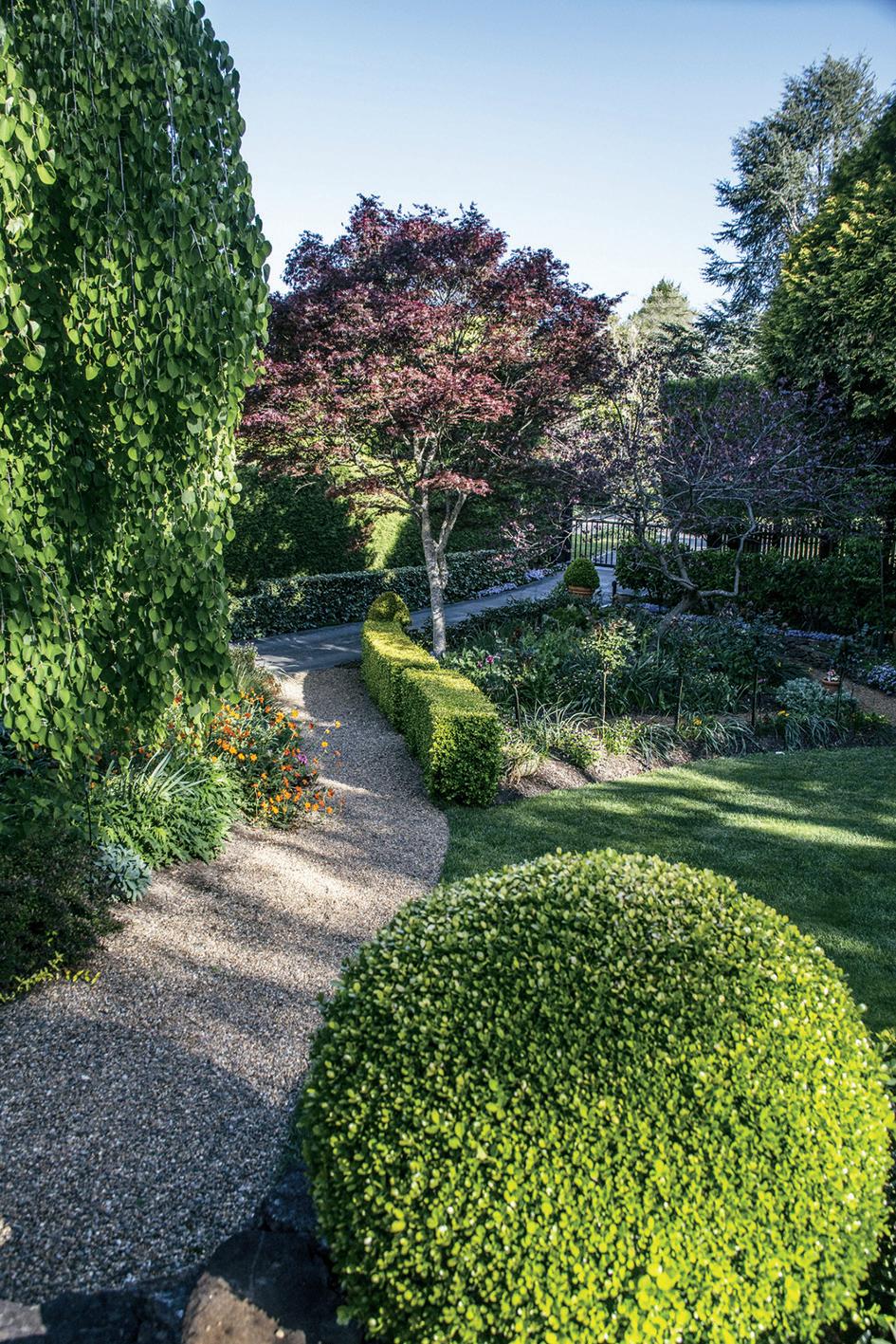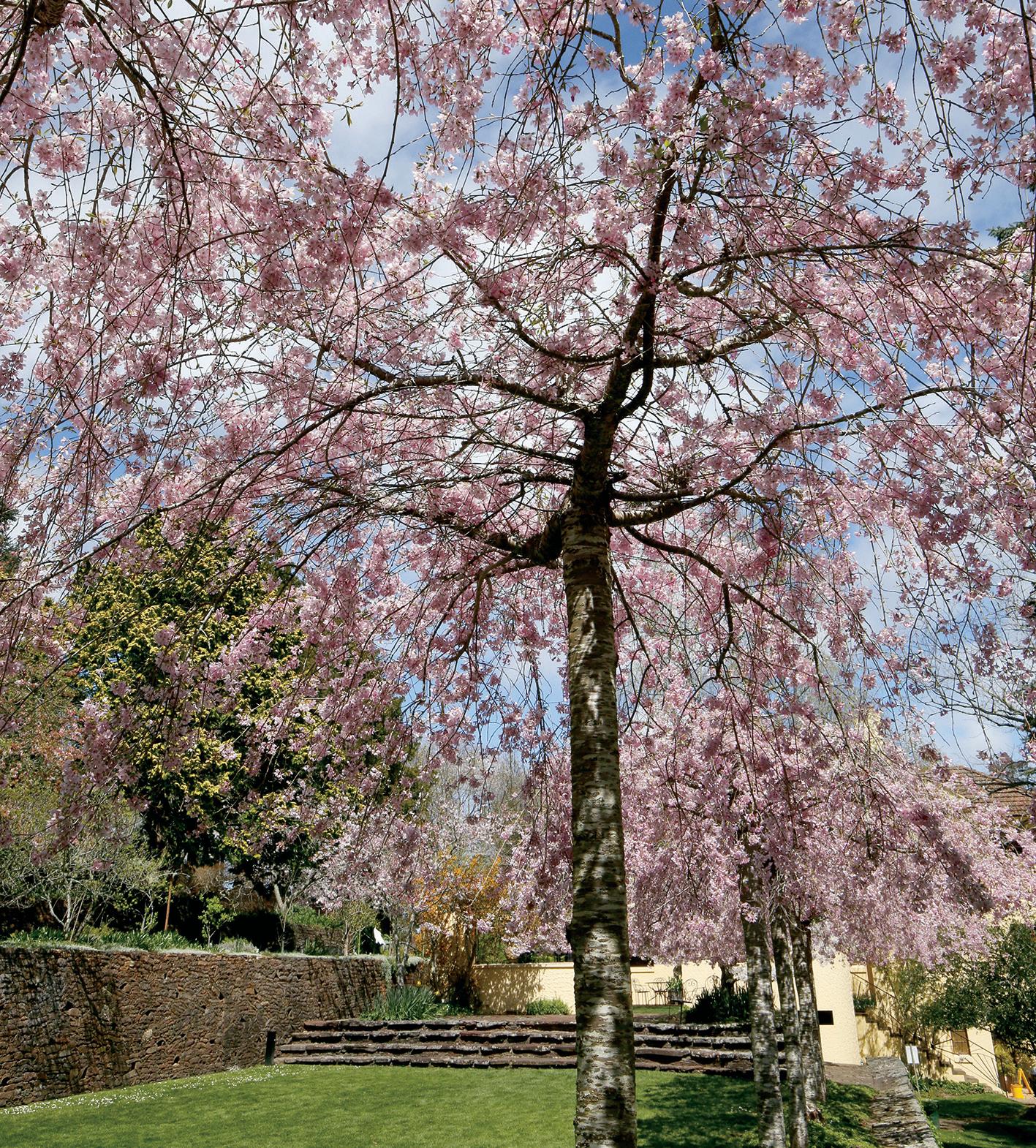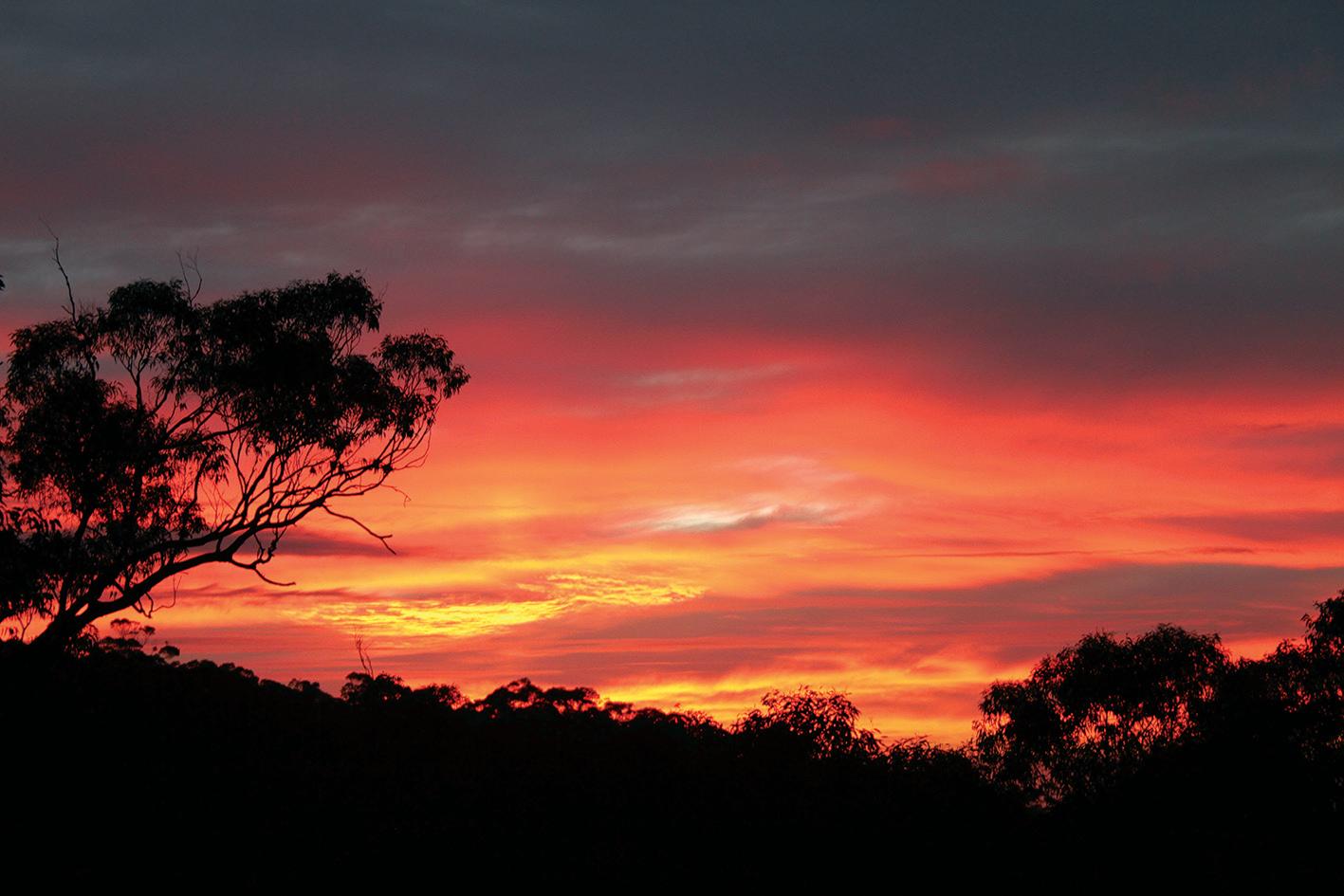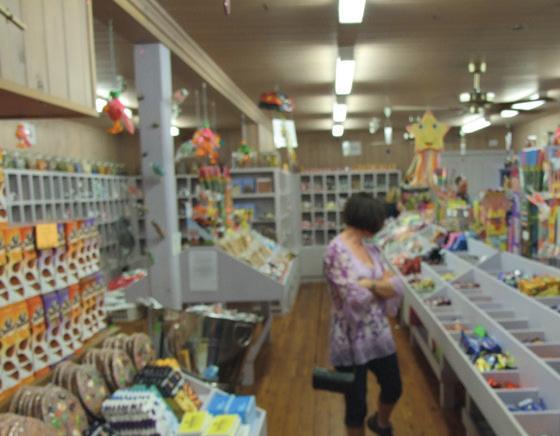
13 minute read
Katoomba Town
We are delighted to announce that the 2021 Leura Gardens Festival will be held this year for six days over two long weekends: Saturday 2 to Monday 4 and Friday 8 to Sunday 10 October
We plan to make our 2021 Festival a wonderful celebration for all garden lovers and we look forward to welcoming everyone back to the upper Blue Mountains to enjoy our beautiful gardens.
The year’s Festival (the 56th) will feature glorious cool climate spring gardens, showcasing a wide range of styles and sizes, from the majestic acres of The Braes and Everglades to the intimacy of several smaller gardens, including the delightful Hill of Grace and Avila, a garden new to the Festival.
On display will be a feast of new growth, masses of flowers, gorgeous bulbs and an amazing variety of cool-climate plants including magnificent deciduous trees which will just be coming into their full glory.
An all-gardens ticket costs $40, a three gardens ticket costs $20 or a single garden ticket costs $10. Both the $40 and $20 tickets are valid for the six days of the Festival. Tickets will be available online later in the year.
The popular Art Show will be held again this year with artists from the Society of Mountains Artists painting in the gardens during the Festival.
Should you be interested in volunteering for the Festival, please email volunteers@leuragardensfestival.com.au
All Festival proceeds go to the Blue Mountains District ANZAC Memorial Hospital and other local health-related organisations.
More details of this not-to-be missed event for garden lovers are available at www.leuragardensfestival.com.au, or on 0431 095 279. You can also follow the Festival on Facebook and Instagram.
(below) Avila garden (top right) Hill of Grace garden (centre right) Karoola garden (bottom right) Everglades garden



The most visited village in the Blue Mountains, Katoomba is where the young Royals were ushered to take in one of the most spectacular sights in the country – the Three Sisters, which tower above the Jamison Valley and stand at 922, 918 and 906 metres respectively. According to Aboriginal dreamtime legend, three sisters named Meehni, Wimlah and Gunnedoo were turned to stone for their own protection after being forbidden to marry three brothers from a different tribe.
Echo Point, perched on the edge of the escarpment and offering a direct view of the Three Sisters, is where several of Katoomba’s finest walking trails begin. The Giant Stairway, comprising eight hundred steps, leads down to the valley floor and joins The Federal Pass trail – a 1.5-kilometre track that takes you to the base of Katoomba Falls and the Scenic Railway, which you can catch back up to the top.
On a clear day, take the Skyway tour at Scenic World to get a genuine sense of the vastness and magnificence of the Blue Mountains. Gliding between cliff tops, the Skyway is Australia’s highest cable car – suspended two hundred and seventy metres above ancient ravines, it has a glass floor so you can see as much of the valley as possible during the seven hundred and twenty-metre journey.
Once you come back down to earth you can discover the tranquillity of the ancient rainforest by taking the 2.4-kilometre Scenic Walkway. It’s an opportunity to learn about local flora, spot a lyrebird, taste pure water straight from Marrangaroo Spring and learn about the site’s history as a coal and shale mine that was operational until 1945.
Also of historical interest is the site known as The Gully, in South Katoomba, which holds great cultural significance to its traditional owners, the Gundungurra and Darug peoples. Prior to white settlement of the region, this natural amphitheatre was long used as a summer camp. After being controversially repurposed as a racetrack in 1957, The Gully was officially declared an Aboriginal Place in 2002, a move warmly welcomed by its traditional custodians. Visitors are invited to experience The Gully Aboriginal Interpretive Walk, which starts on Gates Avenue.
Railway buffs will be interested to know that, back in 1874, the locality was named The Crushers after the railway station that served the nearby quarry, which crushed stone to form railway ballast and directly led to the original development of the area. In 1877 the town was renamed Katoomba – a derivative of the Aboriginal word Kedumba, meaning ‘shiny, falling waters’ – and it was given municipality status in 1889.
Today Katoomba is home to over 8,000 residents and hosts a constant stream of tourists from all around the world. Along with its strong ecological and cultural heritage, the town boasts many fine examples of Art Deco shops, restaurants and guesthouses, as well as charming old miners’ cottages and Federation bungalows. The jewel in the architectural crown is The Carrington Hotel – a grand Victorian property designed by John Kirkpatrick. Originally known as the Great Western Hotel, it was opened by Sydney hotelier Harry Rowell in 1883. Beautifully preserved and a popular destination for weddings and events, The Carrington has long been attracting guests keen to absorb the magic and grandeur of a bygone era. At the back of the hotel you’ll find Carrington Cellars, which is filled to the brim with local, national and international wines plus an impressive selection of deli items.
Katoomba has long had a thriving music scene and the annual Blue Mountains Music Festival sees folk, roots and blues performers from all around the globe coming together here. Running for twenty years, up to one hundred performances are conducted over three days each March. Past guests have included the incomparable Gurrumul, Lior, Xavier Rudd, Chipolatas, Arlo Guthrie, Luka Bloom, Mama Kin, The Popes and Kate Miller-Heidke. During your stay, seize the opportunity to explore the Blue Mountains Cultural Centre – an inspired addition to a village that many artists, photographers and performers call home. Officially opened in November 2012, this substantial art space supports local and visiting artists, and houses the World Heritage Exhibition, where you can learn all about the region’s history and culture. There’s also a scenic viewing platform and a retail space, café and ultra-modern library housed here.

After a day spent absorbing the beautiful surrounds, mixing with locals in cafés, enjoying the architecture or digging up treasures in the well-stocked antique stores, take your pick from the countless restaurants.

Beautiful Hartley Region
When the Victoria Pass road was completed in 1832, the doorway to the west was open and settlement in Hartley, at the base of the hill, began in earnest. The next 50 years saw Hartley grow into a bustling township surrounded by churches, a post office, stage couch facilities, and inns. Unfortunately, Hartley was by-passed by the railway and, over a period, fell into disuse. Luckily, today we are left with a remarkable remnant of a town largely unchanged since the mid-nineteenth century.
After the decline in Hartley as a township from the late 1800’s, in latter years we are seeing the redevelopment of the areas of Hartley, Hartley Vale and Little Hartley. Now with sub-divisions through the areas there are many new residents. Some of the historic buildings have been turned into elegant accommodation and restaurant facilities and there are other new hide-away rural retreats. Old stores have become new stores and more new stores have been built - offering a range of services from rural supplies and local produce to cafes restaurants and take-aways, real estate agent, nursery as well as some art and craft galleries.
The Hartley region is an extensive and beautiful scenic area taking in a number of villages and settlements offering the visitor a plethora of exploring and experiential opportunities and facilities. The five minute drive down the hill from Mt Victoria is well worth the small effort. Little Hartley is only 5 minutes down Victoria Pass from Mt Victoria on the Great Western Highway and lies in a most beautiful and expansive valley.

Historic Hartley Village - Things to do
* Visit Talisman Gallery and metal artist’s workshop. If he’s not watching the amazing view from his workshop you may catch him at the forge and don’t forget to say g’day to him, the name is Ron. * There is also a Kew-Y-Ahn (Aboriginal for tor or rocks) walk. From the top there’s a bird’s eye view over the whole village and surrounding countryside. Access is gained beside the restrooms behind The Old Post Office Cafe. * Enjoy a coffee or lunch at the Old Post Office Cafe. The food is simple and tasty. * Enjoy a self-guided audio tour of the old Courthouse with it’s many fascinating stories. * Visit the Aboriginal art gallery at the visitor centre.
* Wander around the many beautiful old sandstone buildings that comprise this early village.

The Farmhouse Café and Lolly Store
With hundreds of varieties of confectionery to choose from there is something for everyone at The Lolly Bug. Old fashioned English sweets, Scottish delights, boiled lollies, choc coated temptations, giant lolly pops and Australian favourites such as rosy apples and musk sticks. Our gourmet goodies include local honeys and jams. Browse our gift section including hand painted wine glasses and coffee mugs, hand made children’s clothing and a wide selection of Vera May handbags or take time out for a coffee and a delicious treat from the selection in the adjoining coffee shop.
www.facebook.com/thelollybug www.thelollybug.com.au Ph: 02 6355 2162 2297 Great Western Hwy Little Hartley.




Originally named Hounslow, this Upper Blue Mountains village was renamed by Governor Macquarie in 1815, in reference to the colour and texture of the native shrubbery in the area. Thought to be a summer corroboree meeting place for peoples of the Darug, Gundungurra and Wiradjuri tribes, Blackheath developed into a fully fledged town after the Main Western railway line was built in 1869. Located between Medlow Bath and Mount Victoria, the village sits at an altitude of 1065 metres and is close to the highest point in the region. The air here is crisp and it sometimes snows in winter and spring. There’s plenty of colonial history to experience, starting with a walk along Govetts Leap Road. The first building to appear in Blackheath was The Scotch Thistle Inn, built by Andrew Gardner in 1831 and famously visited by Charles Darwin in 1836. The oldest licensed hotel in the

(above) In the garden, taken with a fisheye lens by Denys Joannes (below) A tesslated sandstone platform above the Grose River valley Blue Mountains, it is now known as the Gardners Inn Hotel and is a popular spot for a great pub feed and game of pool. Another notable site is the Victory Theatre, a 1915 Art Deco building that has been converted from a cinema into a fabulous antiques centre. It’s set over two levels and has a café in the original foyer area. Next door is an arcade which houses a number of good shops including Colliers Crystals where you can view or buy all manner of rock samples, gems, jewellery, salt lamps and many other interesting items. Take a wander around the village’s retail strip and you’ll discover a well-curated mix of shops, cafés and galleries set within beautiful old buildings. If you happen to be visiting on the second Sunday of the month, don’t miss the buzzy Blackheath Growers Market said to be the best growers’ market in the region – it’s where regional providores, producers and plant sellers gather, and it’s a great indication that the local food scene is thriving. It’s held adjacent to the community centre in Memorial Park on the highway opposite the railway station. One of the village’s most colourful residents is the artist and fashion designer Jenny Kee, a passionate fan of the Australian bush. Jenny has taken the waratah as her personal emblem and is responsible for designing the fabulous mural on the outside of the Victory Theatre, which was painted in 1985 by members of the local community. In the carpark beside the Victory Theatre is a public toilet the likes of which you will not have encountered anywhere. The murals around it’s walls and over the roof are wild and wonderful. Such facilities are rarely mentioned in connection with art. Equally vibrant are the Campbell Rhododendron Gardens, in Bachante Street. Set over 18.5 hectares, these lovely gardens are filled with rhododendrons and azaleas planted under a canopy of native bush. The gardens are at their beautiful best from September through to November, and are highlighted during the Rhododendron Festival, which takes place each November and sees the whole village celebrating with floral displays, the Annual Art Show, a grand parade and outdoor entertainment. The garden is open year round and is worth a visit at any time of year. Natural beauty abounds in this part of the mountains, which is the headquarters of the Blue Mountains National Parks and Wildlife Service. If you have the time, it’s worth visiting as many of the spectacular high-elevation viewing platforms as possible and following one of the well-worn walking tracks. Start with a trip to Govetts Leap Lookout, which offers amazing views across the Grose Valley and features a waterfall that drops an impressive one hundred and eighty metres to the base of the cliff. Evans Lookout provides an alternate vantage point. Turn into Walls Cave Road, off Evans Lookout Road, and take a short walk to experience Aboriginal history at Walls Cave – it’s believed to have been occupied around 12,000 years ago. Hargraves Lookout is on the opposite side of the train tracks and is accessed via a pleasant drive to the western end of Shipley Plateau, past the tiny village of Shipley, pretty apple orchards and gum trees. The panoramic views over the rural Megalong Valley are nothing short of magnificent, and not far from here is Mount Blackheath – a popular hang-gliding site that allows gliders to soar over the Kanimbla Valley. While you’re over this side of town, take a short drive down one of the countrys most scenic roads through rainforest and the sandstone escarpment to the Megalong Valley. Here there is horse riding, accommodation, a tea room in the most beautiful of settings offering indoor and outdoor tables. A little further along the road takes you over the Coxs River and out to Dryridge estate. Here, overlooking what must surely be the most spectacular view at any cellar door in the country, you can taste good wines and sit with a cheese plate and your glass. All of that fresh air is bound to make you hungry, so book a table at any of the cafes and restaurants in the village, all of which are treasured by the wider community and serve up outstanding dishes bursting with seasonal flavours. Arguably the most spectacular view in the upper mountains is Govetts Leap at the foot of the road of that name. Accessed simply by parking your car and stepping out, this view will take your breath away. A few hundred metres before the carpark and lookout, which is also the starting point for many fabulous bushwalks, you will find the Heritage Centre for park information, gallery and shop. For upper Blue Mountains holiday accommodation contact Blue Mountains Escapes who have an extensive inventory of properties for your next romantic, family or friends group break in the Mountains.











